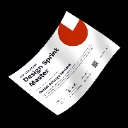
Write something
Design Sprint Brief - Prime your design sprints for success 🎯
Today, I am sharing one of the best resources to make your design sprint workshop (and not only) the best you have ever done. If ↳You’re about to run a design sprint with your product team. ↳You’re considering one but still need to get stakeholder approval. ↳You’re a consultant and have to convince your client first. It’s understandable — after all, a design sprint is a big investment. You’re taking 5-10 people away from their day-to-day roles to focus on a major challenge for 4-5 days. It has to deliver great results. And if it doesn’t? Well, that’s on you. No pressure! 😅 So, how can you set your design sprint up for success? Spoiler alert: it’s all about how you start. At Design Sprint Academy, we’ve learned from running a million design sprints (OK, not quite that many, but you get it) that success begins with a solid Design Sprint Brief. Here’s why a great Design Sprint Brief is your best friend: 🎯 Focus — It defines the problem that needs solving, providing clarity for the team. (Because let’s face it, the hardest part of any project is figuring out what you’re actually solving!) 🤔 Context — It captures past attempts, barriers, and challenges. With this, your team avoids previous mistakes and is better prepared for the sprint. 💰 Business Perspective — It outlines clear business objectives, success metrics, and KPIs so your boss or client know what "winning" looks like. 🤷♂️ Customer Perspective — It reflects the customer’s point of view — from their goals to their frustrations, giving your team deeper insight into who they’re solving for. How do we use the Design Sprint Brief? ✅ Facilitator Checklist — It’s a confidence boost for facilitators. It shows you’ve done your homework on problem definition, business metrics, and customer insights. ✅ Stakeholder Buy-in — A well-written brief can be your secret weapon to getting sign-off. Show the stakeholders or clients exactly what your sprint will achieve in a few days, and you’ll get them on board. ✅ Team Onboarding — Share it with your sprint team before the workshop. They’ll hit the ground running, fully informed and ready to dive in.
1
0
New💡 The VALUE PROPOSITION FIT CYCLE
Introducing a new framework inspired by the Product Market Fit Cycle - Carlos Eduardo Espinal, that focuses on creating customer-centric value propositions for Product Managers or Innovation Managers. Here's a breakdown of our framework: 🏁 Goal/Need: This initial step could be a specific business need, a broader north star goal, or even just an initial idea. 1. Product Hypothesis: Leveraging your understanding of the problem, business context, and past experiences, you develop a solution proposition – the hypothesis of what your product will be. 2. Ideal Target Segment: Here, data and analysis come into play. You refine your target customer segment to a specific group with the highest potential to benefit from your product hypothesis. 3. Problem Framing: This stage involves getting key stakeholders on board. Together, you define the specific problems your target segment faces, prioritize them, and identify the most crucial one your product will address. 4. Define the Value Proposition & Validate with Customers: This is where the Design Sprint happens. You rapidly create a prototype, present it to real users within your ideal target segment, and gather feedback. This stage validates whether your proposed solution (value proposition) actually solves their core problem effectively. 5. Analyze Results: You then assess the feedback from the design sprint. If there's early validation from customers – meaning they find your solution desirable and addresses their needs – you can move forward. ↗ Create Business Case: With positive validation, you can build a business case that justifies the resources needed to bring your product to market. ↘ Go Back & Iterate: With no customer validation, you'll investigate more about the root cause of the problem. Was you hypothesis wrong? Was your target customer segment wrong? or Both?
6
2
New comment Mar 29

Does anyone have experience with applying the "4U" with clients?
In this article , @John Vetan shared more about the 4U framework https://sprintforward.designsprint.academy/p/the-4u-framework But, what I'm very curious to know is if you have used it in a workshop with your clients? And if so, in what specific context? We are now rolling it out as part of our Innovation Hackathon formula, where we get together with key-stakeholders and prioritize challenges to address during the innovation days. What is your experience with it?
2
1
New comment Feb 5

How are you using ChatGPT for your workshops?
Or if at all? I just saw a Linkedin post where someone prompts the AI to build them a workshop agenda, all the exercises with exact timings, and so on. What are your thoughts on this?
4
4
New comment Nov '23

#DesignSprintMasterGPT - your new AI-powered Design Sprint companion is here.
Hi everyone! I am super excited to invite you to take a first look at our #DesignSprintMasterGPT! 🌟 It is loaded with DSA's internal materials and insights. 🔍 Provides expert tips for your sprints straight from the pros. 👥 Helps you keep your team motivated and on-point. 📈 Transforms insights into impactful actions. Our Design Sprint Master GPT - it's like having a world-class coach right at your fingertips. 🌍👌⚡️It's still evolving, but we believe you deserve to be the first to experience its magic! https://www.designsprint.academy/design-sprint-master-gpt Be among the first to try #DesignSprintMasterGPT – give it a spin and share your thoughts with us!
3
0

1-11 of 11

skool.com/design-sprint-masters
A place for facilitators to share tips and experiences on design sprints, problem-framing, and design thinking workshops.
powered by



